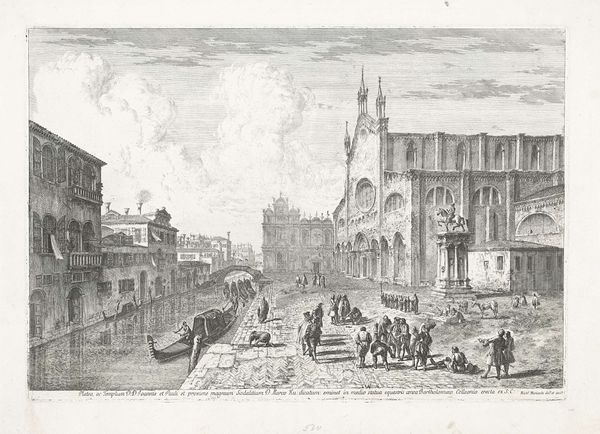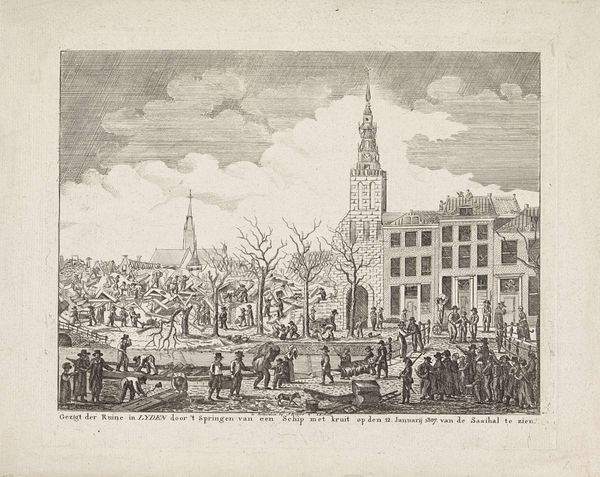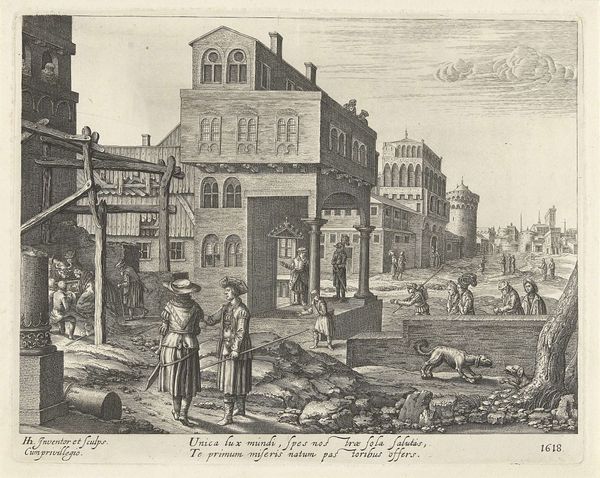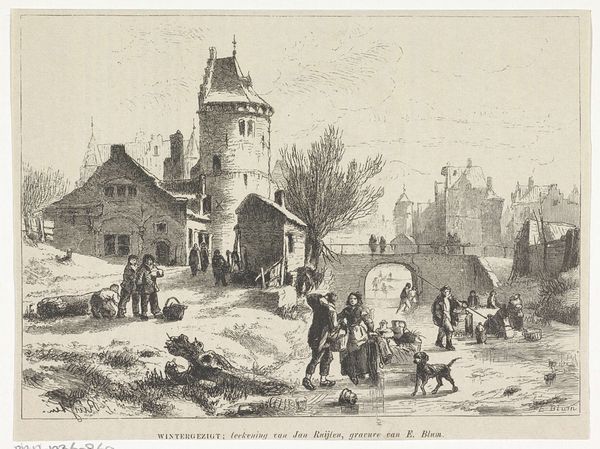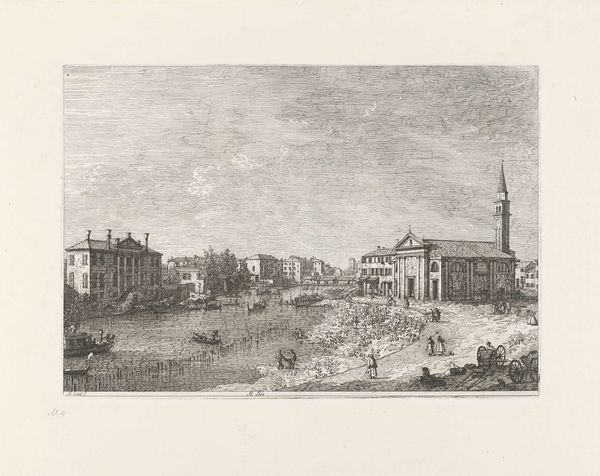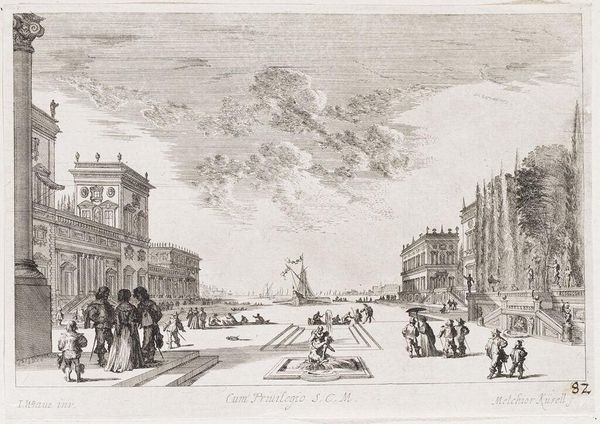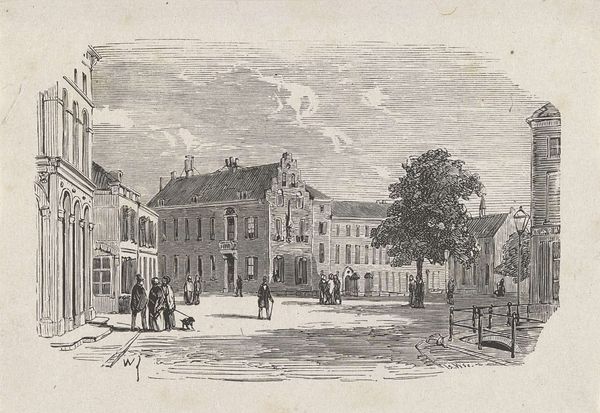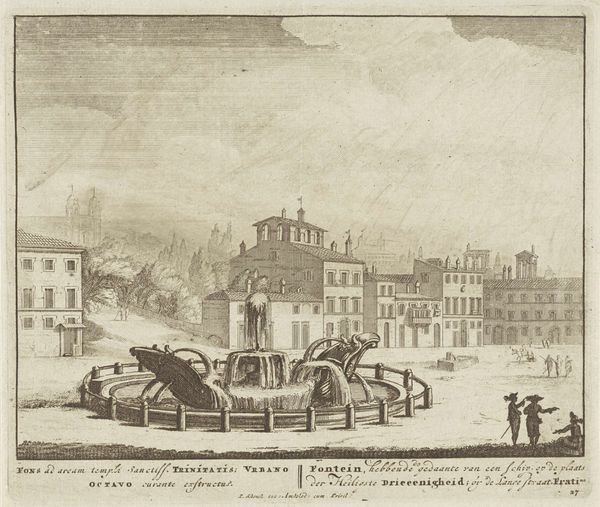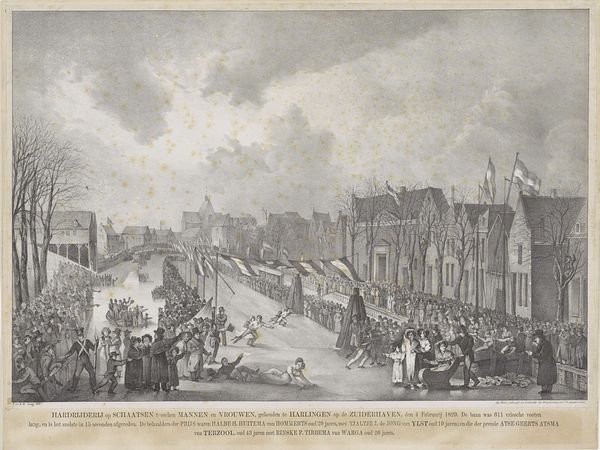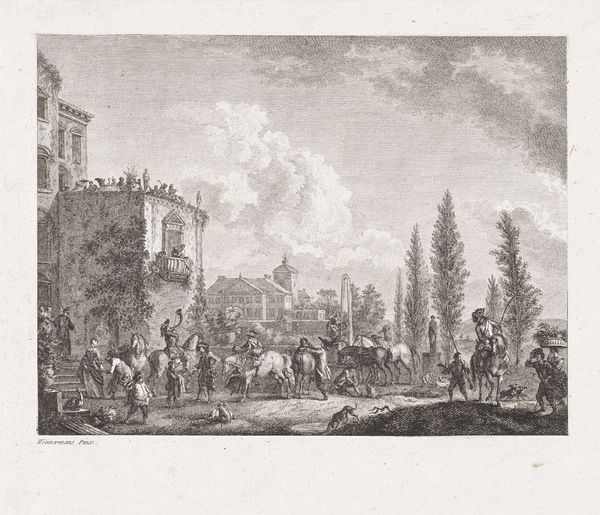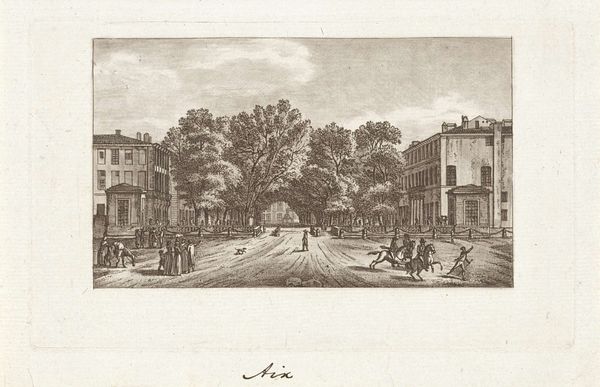
print, engraving
# print
#
cityscape
#
history-painting
#
engraving
#
realism
Dimensions: height 150 mm, width 224 mm
Copyright: Rijks Museum: Open Domain
Curator: The piece before us is titled "Ruïnes na de brand te Enschede, 7 mei 1862," or "Ruins after the fire in Enschede, May 7, 1862." It’s an engraving dating back to 1862, created by the monogrammist P.B. and part of the Rijksmuseum collection. It's a stark depiction of urban devastation. Editor: Right? My gut reaction is… overwhelming sadness. You see these little figures milling about amongst the rubble. It's like a diorama of despair. But also a sort of stoic resilience, you know? Curator: That’s a really astute observation. Viewing it through a contemporary lens, the work documents the impact of industrial disasters on working class communities of the time and invites discussion around the socio-economic inequalities of the era. The community attempting to rebuild evokes a narrative of collective strength in the face of hardship, it is definitely the most poignant aspect. Editor: It's crazy how the artist manages to make so much texture with just black and white lines. The burnt timbers scattered on the ground look almost photographic, while the smoky sky makes me cough just looking at it. I love how that juxtaposition captures that sense of hope among all that ruin; life goes on somehow, you know? Curator: Indeed. This artwork stands as an intersection of social history, class struggle, and resilience—mirroring themes that remain disturbingly relevant in our world today when it comes to inequality. It really invites discussion around environmental disasters and their impacts on marginalised communities. Editor: The destroyed cityscape contrasts so strikingly with the people picking up the pieces, carrying on with their lives, I guess. This engraving makes you think about time, and memory. And also about our own connection to tragedy. I think art like this gives it back a bit of humanity to cold statistics. Curator: A poignant connection, one which I share. Its social commentary remains remarkably resonant in the 21st century. Editor: Definitely food for thought, beautifully etched in monochrome sorrow and hope.
Comments
No comments
Be the first to comment and join the conversation on the ultimate creative platform.
